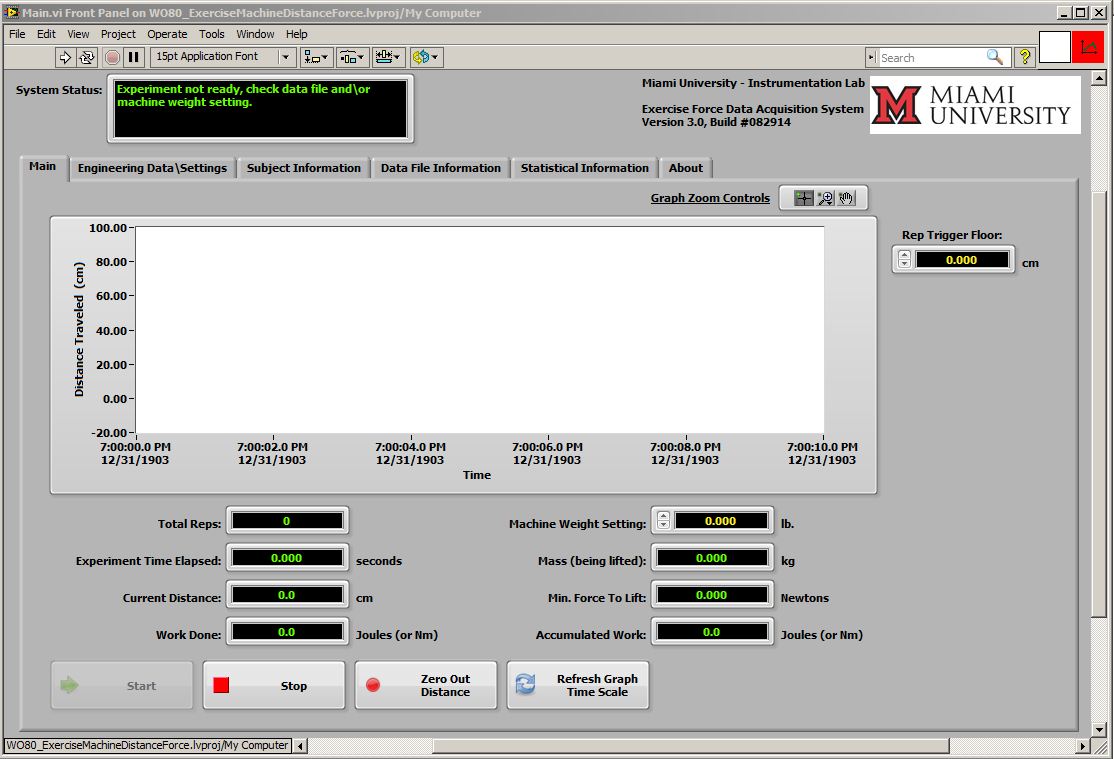Instrumentation Laboratory Project Page
Project: Resistance Exercise Monitoring System (REMS)
Department: Kinesiology and Health
Primary Investigator: Dr. Randall Claytor
Purpose: This system (combination hardware and software system) was developed to measure changes in distance and time of a mass (i.e., weight stack) that is moved during each repetition of various resistance exercises. The hardware (Ultrasound sensor) and software (National Instruments – Labview) configurations enable us to use this information so that the monitoring system counts the number of repetitions and calculates Work, Power, Velocity and Acceleration for each repetition. This monitoring system is used to study the effects of resistance exercise-related muscular fatigue on external measures of Work, Power, Velocity and Acceleration in synchrony with measures of cardiovascular and metabolic function. Additionally, this monitoring system has many practical applications for the development of future resistance exercise equipment.
IL Comment: Researcher required a way of
detecting and recording the movement of weight stacks on a resistance
exercise machine in a gym\lab setting. The system had to be portable
and easily setup by the researcher. The design centers around 3 main
components (1. Magnetically mounted sonar detector for measuring
distance using bouncing sound waves, 2. Microcontroller acting as an
analog to digital converter. 3. A LabVIEW application running on a
Windows laptop to analyze, present, and save the acquired data to
disk).
During data acquisition several items are calculated, presented, and
saved to disk including subject information (height, weight, etc.),
distance traveled by the weight stack vs. time, and other statistical
information such as velocity, acceleration, etc. We ended up finding
that human movement is extremely unpredictable; so several software
components had to designed and implemented to account for the
unpredictability of human movement within the data analysis and
calculations.
Versions 2 and 3 of the system incorporated narrower beam sonar
detectors to allow for them to work on exercise apparatus that had more
interference in the sound wave path.
Cost to researcher: $458.65


